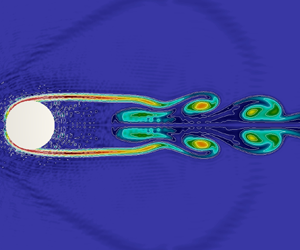Article contents
Reduced kinetic model of polyatomic gases
Published online by Cambridge University Press: 12 May 2023
Abstract

Kinetic models of polyatomic gas typically account for the internal degrees of freedom at the level of the two-particle distribution function. However, close to the hydrodynamic limit, the internal (rotational) degrees of freedom tend to be well represented just by rotational kinetic energy density. We account for the rotational energy by augmenting the ellipsoidal statistical Bhatnagar–Gross–Krook (ES–BGK) model, an extension of the BGK model, at the level of the single-particle distribution function with an advection–diffusion–relaxation equation for the rotational energy. This reduced model respects the  $H$ theorem and recovers the compressible hydrodynamics for polyatomic gases as its macroscopic limit. As required for a polyatomic gas model, this extension of the ES–BGK model not only has the correct specific heat ratio but also allows for three independent tunable transport coefficients: thermal conductivity, shear viscosity and bulk viscosity. We illustrate the effectiveness of the model via a lattice Boltzmann method implementation.
$H$ theorem and recovers the compressible hydrodynamics for polyatomic gases as its macroscopic limit. As required for a polyatomic gas model, this extension of the ES–BGK model not only has the correct specific heat ratio but also allows for three independent tunable transport coefficients: thermal conductivity, shear viscosity and bulk viscosity. We illustrate the effectiveness of the model via a lattice Boltzmann method implementation.
- Type
- JFM Papers
- Information
- Copyright
- © The Author(s), 2023. Published by Cambridge University Press
References
- 2
- Cited by



